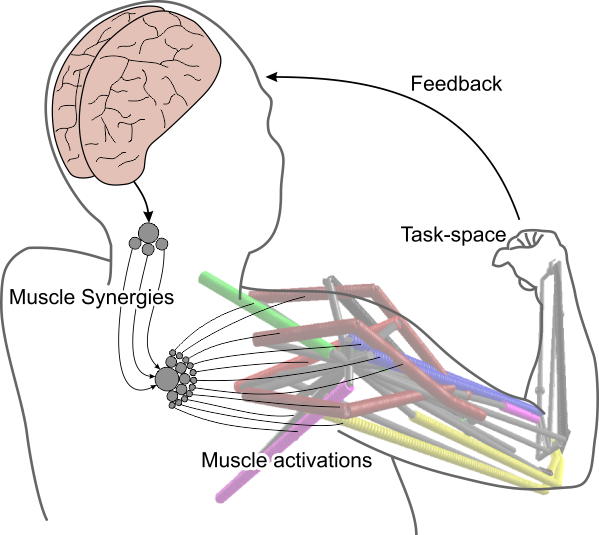This project aims to provide insight into the human motor control system via mathematical system modeling techniques.
The human musculoskeletal system is highly redundant, nonlinear, and with time-delays and noise. A truly challenging system to control. Yet the nervous system controls the movements very pensively, and with remarkable efficiency. How does the nervous system do that?

Having a model of the human motor control system is beneficial in many was:
- Neuroscience and motor control studies: The biologically plausible motor control models are valuable tools to study the nervous system, and to perform "experiment" that are hard (or impossible) in practice; such as isolating certain processes, or perform what-if scenarios.
- Rehabilitation: knowing how the motor control system works, we might be able to tailor a rehabilitation program for a certain lesion, in order to regain functionality faster and more effectively.
- Virtual prototypic of assistive devices: Computer simulations can facilitate the design and improvement of the assistive devices. A fast motor control model that mimics human behaviour is a necessity in such simulations.
- Artificial control of limb movements: Stimulating the muscles with electrodes to generate motion in paralyzed limbs have been around for decades. However, due to the complexities of the human body, these systems have limited capabilities. A real-time motor control model that can handle the complexities will extend the usefulness of these systems.
Related theme
Biomechanics and sports engineering, Control and optimization